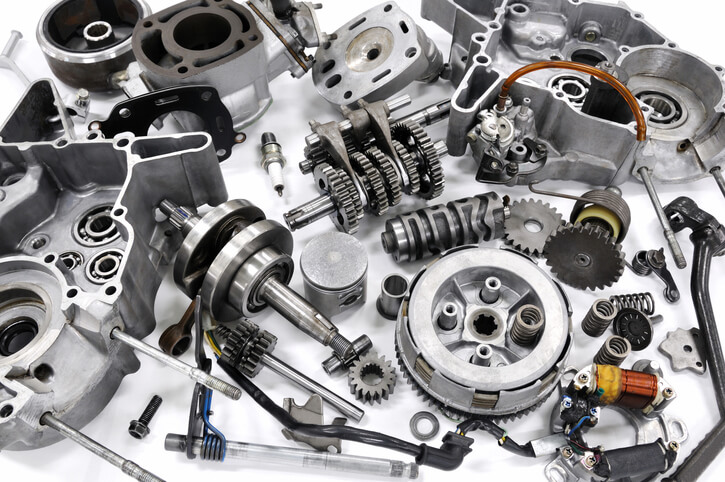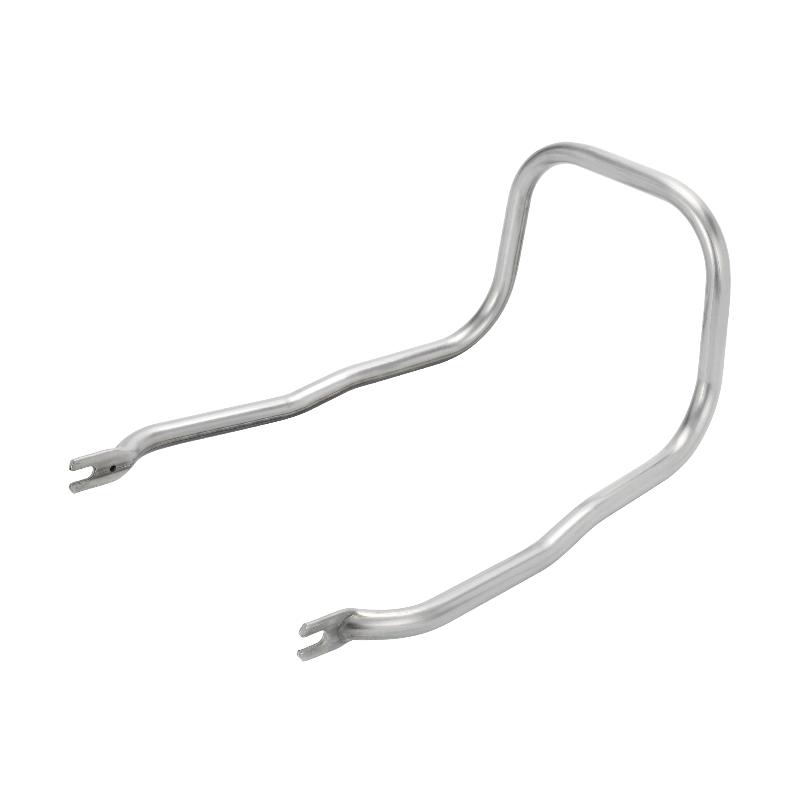THE MOST IMPORTANT PARTS OF YOUR MOTORCYCLE TO KNOW ABOUT
Apr . 17, 2024 17:45
THE MOST IMPORTANT PARTS OF YOUR MOTORCYCLE TO KNOW ABOUT

A motorcycle is a sophisticated machine and has many components. These parts range from tires to transmissions. It can be overwhelming to discover everything you need to know about your ride.
To take good care of your bike, especially if you are a new rider, it’s vital to learn about these components.
So, let’s first take a quick look at your motorcycle’s basic yet essential parts.
Wheels
A motorcycle’s wheels carry the vehicle’s weight, rider, pillion, and luggage load. The rims are often spoked or alloy. Spoked wheels are common dirt bikes and vintage motorcycles. Alloy wheels are common on most street bikes and high-performance machines for their high-speed stability and ease of manufacturing.

Tires
Tires are the only link between the rider and the road and ensure a solid grip on the terrain. Manufacturers recommend changing your motorcycle’s tires every five years, regardless of signs of wear. Tires consist of several layers, multiple compounds, and interwoven materials. They are durable and can withstand rocks, potholes, and uneven road surfaces.
Tires are available in many variations. Each one has a specific use. For example, touring tires can handle long-distance riding. While MX tires can get down and dirty on rough terrain. A tire is one of the most critical parts of a motorcycle and a part that needs a regular and thorough inspection.
Suspension
A motorcycle’s suspension uses a combination of springs and dampers to isolate the rider and chassis from surface imperfections. Front forks and rear shock absorbers support all the bike’s sprung weight. They work to minimize the effect of bumps, potholes, cornering, acceleration, and deceleration forces. The dampening of the shock absorbers also allows the wheel to maintain proper contact with the road.
Engine
At the beating heart of every motorcycle is its engine. It is responsible for providing power to the rear wheel and, in the case of internal combustion engines, is fuelled by gasoline. They consist of pistons, a cylinder block, cylinder head, crankshaft gearbox, and much more. Motorcycle engines are often either two-stroke or four-stroke. Their classification depends primarily on three characteristics: the number of cylinders, cubic capacity, or the number of power strokes per revolution of the crankshaft.
Exhaust System
A motorcycle’s exhaust system conveys harmful gasses from the engine’s combustion chamber, with many systems filtering gasses via a catalytic converter. Depending on the number of cylinders, an exhaust system may consist of a number of header pipes and silencers.
Brakes
Brakes are responsible for slowing the motorcycle or bringing it to a complete stop. Brakes range anywhere from dual calipers, single calipers, radial mounted, axial mounted, hydraulic, cable operated, and so much more. There are two basic types of brake systems, calipers, and drums. One is responsible for the front wheel and the other for the rear. When the rider applies both brakes simultaneously, they work in harmony to bring both wheels to a stop. As the front brake takes more load, the brake pads wear out faster than the rear.
Gas Tank
The role of the gas tank is to store the fuel necessary to power the motorcycle’s engine. An average size gas tank can hold between 3-6 gallons. Miles per gallon will depend on many factors, including the engine’s cubic capacity, environment, motorcycle type and usage, and riding style.
Frame
The backbone of a motorcycle is its frame, and for production, motorcycles are either steel or aluminum. Some exotic motorcycles even use carbon fiber. The frame provides the base for the bike’s components, including the rear suspension, steering, engine, gas tank, and battery.
Transmission
A motorcycle’s transmission regulates the engine speed via a gearbox. It delivers power to the rear wheel and enables the bike to move forward. Most modern motorcycles have either 5 or 6 gears while some exotic touring bikes even have a reverse. There are even automatic transmissions in some motorcycles.
Dashboard Display
The dashboard display is often located forward and center of the motorcycle handlebars and provides the rider with vital vehicle info and data. It can tell you the vehicle and engine speed, engine temperature, potential mechanical issues, and more. There are four main dashboard display types. These are analog, digital, TFT, and LCD.
 Afrikaans
Afrikaans  Albanian
Albanian  Amharic
Amharic  Arabic
Arabic  Armenian
Armenian  Azerbaijani
Azerbaijani  Basque
Basque  Belarusian
Belarusian  Bengali
Bengali  Bosnian
Bosnian  Bulgarian
Bulgarian  Catalan
Catalan  Cebuano
Cebuano  Corsican
Corsican  Croatian
Croatian  Czech
Czech  Danish
Danish  Dutch
Dutch  English
English  Esperanto
Esperanto  Estonian
Estonian  Finnish
Finnish  French
French  Frisian
Frisian  Galician
Galician  Georgian
Georgian  German
German  Greek
Greek  Gujarati
Gujarati  Haitian Creole
Haitian Creole  hausa
hausa  hawaiian
hawaiian  Hebrew
Hebrew  Hindi
Hindi  Miao
Miao  Hungarian
Hungarian  Icelandic
Icelandic  igbo
igbo  Indonesian
Indonesian  irish
irish  Italian
Italian  Japanese
Japanese  Javanese
Javanese  Kannada
Kannada  kazakh
kazakh  Khmer
Khmer  Rwandese
Rwandese  Korean
Korean  Kurdish
Kurdish  Kyrgyz
Kyrgyz  Lao
Lao  Latin
Latin  Latvian
Latvian  Lithuanian
Lithuanian  Luxembourgish
Luxembourgish  Macedonian
Macedonian  Malgashi
Malgashi  Malay
Malay  Malayalam
Malayalam  Maltese
Maltese  Maori
Maori  Marathi
Marathi  Mongolian
Mongolian  Myanmar
Myanmar  Nepali
Nepali  Norwegian
Norwegian  Norwegian
Norwegian  Occitan
Occitan  Pashto
Pashto  Persian
Persian  Polish
Polish  Portuguese
Portuguese  Punjabi
Punjabi  Romanian
Romanian  Samoan
Samoan  Scottish Gaelic
Scottish Gaelic  Serbian
Serbian  Sesotho
Sesotho  Shona
Shona  Sindhi
Sindhi  Sinhala
Sinhala  Slovak
Slovak  Slovenian
Slovenian  Somali
Somali  Spanish
Spanish  Sundanese
Sundanese  Swahili
Swahili  Swedish
Swedish  Tagalog
Tagalog  Tajik
Tajik  Tamil
Tamil  Tatar
Tatar  Telugu
Telugu  Thai
Thai  Turkish
Turkish  Turkmen
Turkmen  Ukrainian
Ukrainian  Urdu
Urdu  Uighur
Uighur  Uzbek
Uzbek  Vietnamese
Vietnamese  Welsh
Welsh  Bantu
Bantu  Yiddish
Yiddish  Yoruba
Yoruba  Zulu
Zulu 













